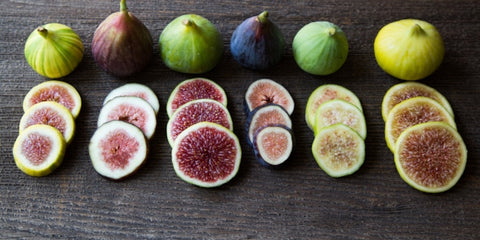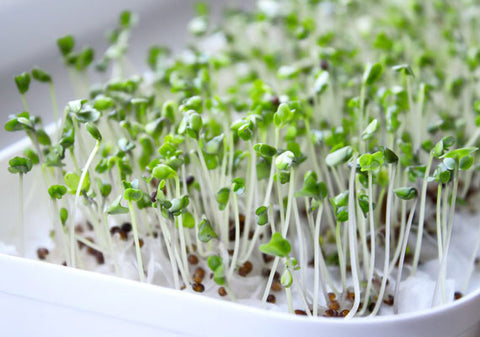As gardeners, we are stewards of nature's bounty, and one of the most rewarding practices we can engage in is saving seeds from our gardens. Not only does seed saving allow us to preserve the genetic diversity of our favorite plants, but it also empowers us to cultivate resilient, locally adapted varieties year after year. In this blog, we'll delve into the art and science of saving seeds from your garden, providing you with the knowledge and confidence to become a proficient seed saver and guardian of biodiversity.The following content also has some reference value for raised garden beds.
Understanding the Importance of Seed Saving
Seed saving is an ancient practice that predates modern agriculture, with farmers and gardeners carefully selecting and saving seeds from their most productive and resilient plants to ensure a reliable food supply for future generations. Today, seed saving is more important than ever as we face threats to biodiversity, food security, and climate resilience. By saving seeds from our gardens, we can help preserve rare and heirloom varieties, adapt plants to changing environmental conditions, and promote genetic diversity in our food systems.
Getting Started with Seed Saving
To begin saving seeds from your garden, it's essential to understand the basics of plant reproduction and seed development. Most flowering plants reproduce sexually, meaning they produce seeds through the pollination of flowers by insects, birds, wind, or other natural mechanisms. Once pollinated, flowers develop into fruits or seed pods that contain the seeds of the next generation. By observing and understanding this process in your garden, you can identify when and how to harvest seeds from your plants.

Choosing the Right Plants to Save Seeds From
When selecting plants to save seeds from, it's important to choose open-pollinated or heirloom varieties rather than hybrids. Open-pollinated varieties produce seeds that will reliably grow true to type, meaning they will exhibit the same characteristics as the parent plant. Heirloom varieties are time-tested favorites that have been passed down through generations and often have unique flavors, colors, and growth habits. By saving seeds from open-pollinated and heirloom plants, you can preserve their unique traits and contribute to the diversity of your garden.
Seed Saving Techniques for Different Types of Plants
The process of saving seeds varies depending on the type of plant you're working with. Here are some common seed saving techniques for different types of plants:
- Vegetables: For vegetables like tomatoes, peppers, and cucumbers, seeds are typically found inside the fruit. To save seeds, allow the fruits to fully ripen on the plant, then scoop out the seeds and pulp and rinse them clean. Dry the seeds thoroughly on a paper towel or screen before storing.
- Herbs: Many herbs, such as basil, cilantro, and dill, produce seeds in clusters or seed heads. Allow the seed heads to dry out on the plant, then harvest them and remove the seeds. Dry the seeds thoroughly before storing.
- Flowers: Flowers like marigolds, sunflowers, and zinnias produce seeds in seed heads or pods. Allow the seed heads or pods to dry out on the plant, then harvest them and remove the seeds. Dry the seeds thoroughly before storing.
- Biennials: Biennial plants, such as carrots, beets, and onions, produce seeds in their second year of growth. Allow the plants to overwinter in the garden, then harvest the seeds from the flower stalks in the following growing season.
Harvesting and Storing Seeds
Once you've harvested seeds from your plants, it's important to store them properly to ensure their viability and longevity. Here are some tips for harvesting and storing seeds:
- Harvest at the Right Time: Harvest seeds when they are fully mature and dry on the plant. Avoid harvesting seeds from immature or green fruits or flowers, as they may not be viable.
- Clean and Dry Seeds: Clean seeds by removing any pulp, chaff, or debris, then spread them out in a single layer to dry thoroughly. Seeds should be completely dry before storing to prevent mold and rot.
- Store in a Cool, Dry Place: Store seeds in airtight containers or envelopes in a cool, dry place away from sunlight and moisture. A basement or pantry is an ideal storage location for seeds.
- Label and Organize: Label each container or envelope with the plant variety and the date of harvest to keep track of your seeds. Organize seeds by type and store them in a systematic manner for easy access.
- Test Seed Viability: Periodically test the viability of your seeds by germinating a small sample. If a high percentage of seeds germinate, the batch is still viable and can be used for planting.

Conclusion
Saving seeds from your garden is a time-honored tradition that allows you to preserve the genetic diversity of your favorite plants and contribute to the resilience of our food systems. By understanding the basics of seed saving and following the step-by-step guide outlined in this blog, you can become a skilled seed saver and play a vital role in preserving biodiversity and promoting sustainable agriculture. So roll up your sleeves, get out into the garden, and start saving seeds for a greener, more resilient future!









